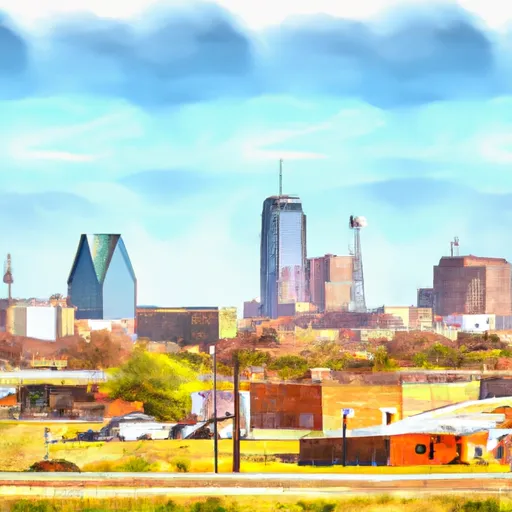-
 Snoflo Premium
Snoflo Premium
Get unlimited access to all our content
With no Ad interruptions! - Start Your Free Trial Login with existing account
London
Eden Index
Climate
7.9
•
Recreation
•
Community
•
Safeguard
3.2/10

London, Texas is a small rural community located in Kimble County, in the central part of the state. The climate in London is categorized as a humid subtropical climate, characterized by hot summers and mild winters. Summers are typically hot and dry, with temperatures often reaching the mid to high 90s Fahrenheit. Winters are generally mild, with average temperatures ranging from the 40s to 60s Fahrenheit.
The hydrology constituents in London mainly revolve around the Llano River, which flows nearby. This river serves as a significant source of water for the community and provides various outdoor recreational opportunities. The river is known for its fishing, particularly for bass and catfish, and is popular for boating, swimming, and kayaking.
The region surrounding London offers plenty of outdoor recreation opportunities. The rugged terrain and picturesque landscapes make it ideal for hiking, camping, and birdwatching. Additionally, there are several state parks nearby, such as South Llano River State Park and Lost Maples State Natural Area, which provide opportunities for wildlife viewing, picnicking, and exploring nature trails.
Overall, London, Texas offers a warm climate, a scenic river, and abundant outdoor recreational activities, making it a desirable destination for nature enthusiasts and outdoor adventurers.
What is the Eden Index?
The Snoflo Eden Index serves as a comprehensive rating system for regions, evaluating their desirability through a holistic assessment of climate health, outdoor recreation opportunities, and natural disaster risk, acknowledging the profound impact of these factors on livability and well-being.
Climate Health Indicator (CHI): 7.9
London receives approximately
663mm of rain per year,
with humidity levels near 90%
and air temperatures averaging around
19°C.
London has a plant hardyness factor of
8, meaning
plants and agriculture in this region tend to thrive here all year round.
By considering the ideal temperature range, reliable water supplies, clean air, and stable seasonal rain or snowpacks, the Climate Health Indicator (CHI) underscores the significance of a healthy climate as the foundation for quality living.
A healthy climate is paramount for ensuring a high quality of life and livability in a region, fostering both physical well-being and environmental harmony. This can be characterized by ideal temperatures, reliable access to water supplies, clean air, and consistent seasonal rain or snowpacks.
Weather Forecast
Streamflow Conditions
Middle Colorado-Llano
Area Rivers
Middle Colorado-Llano
Snowpack Depths
Middle Colorado-Llano
Reservoir Storage Capacity
Middle Colorado-Llano
Groundwater Levels
Recreational Opportunity Index (ROI):
The Recreational Opportunity Index (ROI) recognizes the value of outdoor recreational options, such as parks, hiking trails, camping sites, and fishing spots, while acknowledging that climate plays a pivotal role in ensuring the comfort and consistency of these experiences.
Access to outdoor recreational opportunities, encompassing activities such as parks, hiking, camping, and fishing, is crucial for overall well-being, and the climate plays a pivotal role in enabling and enhancing these experiences, ensuring that individuals can engage in nature-based activities comfortably and consistently.
Camping Areas
| Campground | Campsites | Reservations | Toilets | Showers | Elevation |
|---|---|---|---|---|---|
| Brady Lake City Park | 80 | 1,755 ft | |||
| Concho Park - O.H. Ivie Reservoir | None | 1,578 ft | |||
| Lakeside - Hords Creek Lake | 50 | 1,934 ft | |||
| Kennedy Park - O.H. Ivie Reservoir | 30 | 1,584 ft | |||
| Padgitt Park - O.H. Ivie Reservoir | None | 1,604 ft | |||
| Flatrock Park - Hords Creek Lake | 70 | 1,920 ft | |||
| Richards City Park | 65 | 1,684 ft | |||
| Lost Maples State Natural Area | 70 | 1,796 ft | |||
| Garner State Park | 400 | 1,486 ft |
Nearby Fishing
Nearby Ski Areas
Catastrophe Safeguard Index (CSI):
The Catastrophe Safeguard Index (CSI) recognizes that natural disaster risk, encompassing floods, fires, hurricanes, and tornadoes, can drastically affect safety and the overall appeal of an area.
The level of natural disaster risk in a region significantly affects safety and the overall livability, with climate change amplifying these risks by potentially increasing the frequency and intensity of events like floods, fires, hurricanes, and tornadoes, thereby posing substantial challenges to community resilience and well-being.
Community Resilience Indicator (CRI):
The Community Resilience Indicator (CRI) recognizes that education, healthcare, and socioeconomics are crucial to the well-being of a region. The CRI acknowledges the profound impact of these elements on residents' overall quality of life. By evaluating educational resources, healthcare accessibility, and economic inclusivity, the index captures the essential aspects that contribute to a thriving community, fostering resident satisfaction, equity, and social cohesion.

